Author: Crypto Rabbit Holes

The crypto world seems to be full of hype and speculation. It's nice (and totally crazy) that people are making life-changing bucks selling NFT images on the internet, but what's the point of all this? What tangible value do cryptocurrencies have?
creator economycreator economy" (creator economy) and "passion economy" (passion economy). If you follow people who discuss this field, you will undoubtedly notice Li Jin.
Li Jin's vision for this world is as follows:
A world where people can do what they love and live fuller, more meaningful lives.
She is widely recognized as one of the people who thinks and writes about what it takes to be a creator on the internet. I went down a deep rabbit hole and read a lot of her interviews and writing. One thing stands out to me:Crypto can help us build a world where we can all earn income and ownership of our contributions on the internet.
To understand Crypto's value to creators and their fans, we need to look back at the challenges and opportunities creators have faced throughout history. I'll be drawing a lot from Li Jin's wisdom to tell the story of the creator economy and how it came to be.
*The ideas in this article are not my credit, the whole article is basically a reproduction of Li Jin's thoughts. I try to put them together in a logical and accessible narrative to understand the creator economy and the role Crypto plays in it. If these thoughts resonate with you, I highly recommend listening to Li Jin's interview or readingher work。
first level title
Who is Li Jin?
image description

This is Li Jin, source: https://li-jin.co/about/
At 17, she had to choose between pursuing her love of drawing at art school or attending a traditional university. "Harvard, and the promise of financial security, was a dream of my parents and mine. I went, and you know what happened next," she said.
After graduating from Harvard, she worked in corporate strategy and product management before joining venture capital firm a16z in 2016 as a consumer investor. Since joining a16z, Li Jin has invested in individuals and companies developing towards her vision for the world. After leaving a16z, she started Atelier Ventures, her own early-stage VC fund, which has now merged with Variant Fund, where Li Jin is co-founder and general partner. Variant Fund is a crypto fund investing in a "world where everyone becomes the owner of the products and services they use".
image description
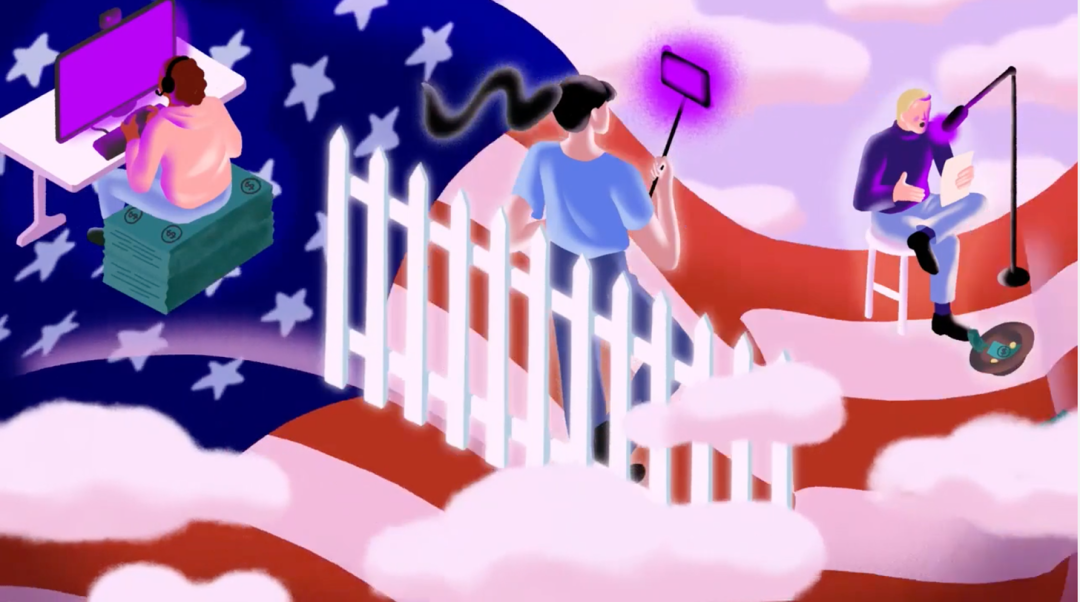
The picture above is Li Jin's first NFT picture. Note: This is just a screenshot, the original image is an animation. Its description reads: “Societies and platforms prosper when everyone has the opportunity to move upward, achieve economic security, learn and grow. The beauty is that, whether in the physical or digital world, this path It's all up to us to build."
first level title
What is the "creator economy"?
First, we need to break down the meaning of "creator economy":
creatoris a broad term, so we're limiting it to anyone who uploads their own content online. More specifically, we can also define subcategories of creators based on variables such as the platforms they use, the content they create, and the vertical they are in, etc. For example, fitness trainers share instructional videos on Youtube, or digital artists upload their artistic pictures on Instagram.
in the creator economyeconomyIt's about how individuals can monetize the content they create.
Li Jin described the evolution of the creator economy as 4 distinct stages.Here is a short description of each phase:
Creator Economy 1.0:Since the birth of the Internet, individuals can become creators.
Creator Economy 2.0:Creators use their influence on the platform to monetize through advertising and brand sponsorships. We'll explore the problems that arise with this advertising-based business model.
Creator Economy 3.0:Creators become independent businesses and monetize directly from their fans. This is the most important part of this article, as we explore: the Passion Economy, how to build a middle class of creators, 100 True Fans, and the role played by cryptocurrencies.
Creator Economy 4.0:Creators and their fans create and accumulate wealth together. Here's our glimpse into the creator economy of the future.
first level title
Creator Economy 1.0: The Rise of Creators
Li Jin: "Creator economy 1.0, is the beginning of the creator economy. I think the creator economy has been around since the internet existed, so initially people uploaded content online. They did it on their own stand-alone websites or blogs they built ...and then, with the advent of social networking, people also used it for content creation. In those days, I thought everyone was a content creator as long as they posted content, but in terms of the "economic" part of content creation, This is still in its infancy. "
The creative economy began with the birth of the Internet. It enables anyone to upload their own content online and become a creator.This started as a personal website and quickly transformed into a platform for social media and user-generated content such as MySpace, Flickr, Facebook, Reddit and many others. As Li Jin said, the "economic" part of it (creators earning money from the content they create) was missing because it was difficult to collect payments online at the time.
That's partly because payment functionality wasn't built directly into internet browsers at the time.Marc Andreessen, co-founder of Netscape (one of the first Internet browsers) and a16z, described this as the "original sin of the internet".
first level title
Creator Economy 2.0: The Monetization of Attention
Li Jin: "The creator economy 2.0 is an economy that grows around people who build their reputation and influence on all these channels. Gradually, there are people who are building audiences by posting content on the internet. They're kind of like digital natives. Celebrities. These groups of influencers then start to monetize, usually in the form of advertising or brand sponsorship. So they make money by capturing the eyeballs (attention) of their users and the reach they get from the overall audience, which is a A game that can really profit from influence and scale."
The rise of platforms like Facebook, Instagram and Youtube has allowed creators to monetize at scale through advertising and brand sponsorships. These platforms aggregate vast amounts of online content and transform the chaos of the internet into easy-to-use applications. This is great for creators and their fans.Creators can more easily create content, build a large user base, and monetize users' attention. Meanwhile, fans can easily discover and consume content from their favorite creators without spending money.
Despite these benefits, some problems have arisen:
In order to make as much profit as possible,Creators need to build the largest user base possible. This encourages virality and the creation of eye-catching content (rather than niche content).(Editor’s Note: Niche content is about creating content that resonates strongly with a specific audience in order to drive strong results. Niche content is a way to better connect with consumers, customers, or readers. )
Li Jin: The biggest impact of the Web2 Internet may be creators who cannot be born and creations that have never been created because there is no viable business model.
Building a large user base requires getting as much attention as possible. Given that attention is limited and the platform’s algorithmic feedback is biased towards creators who have already earned it, the result is that only a few creators can climb to the top and make a living. Meanwhile, other creators, whom Li Jin dubs "long-tail creators," are barely getting by.
Li Jin: On the web2 enthusiasm economy platform, only a very small percentage of creators are actually able to earn a full-time living wage, and everyone else is cobbling together some side income to supplement their day jobs. For example, on the music streaming platform Spotify, the top 43,000 artists (roughly 1.4% of the platform) receive 90% of the royalties, and they earn an average of $22,395 per artist per quarter. The remaining 3 million creators, or the remaining 98.6% of artists, earn just $36 per quarter per artist.
There is an imbalance of power between Web2 platforms and their creators.While creator success brings value to the platform,They are passive recipients of platform decisions. These platforms are capable of making decisions that can have a significant impact on a creator’s livelihood — for example, changing how and how much a creator earns, or even choosing to remove them from the platform entirely. This is problematic because creators build a reliance on platforms to distribute their content and acquire their audiences. Worse, creators are often locked into specific platforms, as their data, including audience details, is locked in siled databases on a single platform.
first level title
Creator Economy 3.0: The Monetization of Personality and Passion
Li Jin: In the stage of Creator Economy 3.0, creators are not just a channel to sell other people's businesses and brands, but also see themselves as brands and businesses, and try to profit from their roles in different ways. They do this by using many different tools and platforms that have flourished over the past few years, all based on monetizing directly through their superfans. That's where we are now. In the Creator Economy 3.0 stage, creators act as their own independent businesses. In this third phase, I see NFT as another tool to help creators monetize directly from fans.
The underlying theme of Creator Economy 3.0 is the increasing ease and ability of creators to get paid directly from fans.
This phase was triggered by two major changes:
The rise of new digital platforms like Skillshare and Substack has created new, more accessible forms of income; and
Tools like Webflow and Stir simplify the process of creating and running an online business, lowering the barrier to entry.
Together, these tools and business models open up the possibility for more individuals to monetize (profit) their unique skills, knowledge, and passions—this is Li Jin's vision for the "Passion Economy."
image description
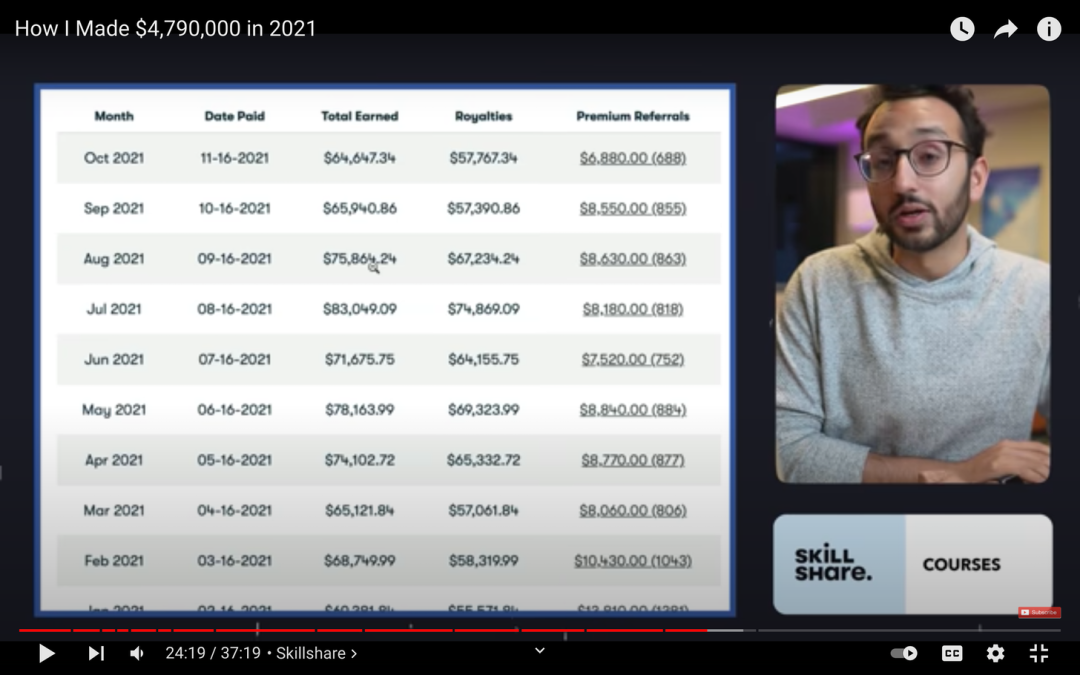
Ali Abdaal shares a breakdown of his monthly income through the Skillshare platform in 2021. Screenshot source: https://www.youtube.com/watch?v=Toz7XEsSH_o
Another exciting effect is thatPeople like Li Jin, who previously couldn't see avenues to monetize their passions and niche interests, can now do so. This is also a good thing for consumers, as it makes it easier for consumers to discover content and creators that match their preferences.image description

Above: David Perell runs his own online course called "Write of Passage." Source of screenshot: https://writeofpassage.school/
However, as we know, there is a difference between profitability and earning a living. In the Creator Economy 2.0 stage, most creators are "making a little extra money". Inequality issues are inevitable in the creator economy, as creators use their uniqueness to build a loyal fan base, and creators are not easily replaceable.However, the enthusiasm economy cannot exist at scale if success is concentrated only at the top.
In his article "Building the Middle Class of the Creator Economy," Li Jin argues that,Just like in the real world,We need a healthy middle class of creators; the middle class refers to "those who are not household names, but have a solid user base who provide the basis for creators to earn a decent income."
Li Jin: When wealth is not concentrated in the richest 1%, the sustainability of the country and the defensibility of the platform are better. In the real world, a healthy middle class is essential to foster social trust, provide steady demand for products and services, and drive innovation.
One possibility is that if the creator can find the "100 real followers"(100 True Fans); here is Li Jin's adaptation of Kevin Kelley's original "1000 True Fans" (1000 True Fans) idea:
Kevin Kelley: You don't need millions of dollars to be a successful creator. You don't need millions of dollars or millions of consumers, millions of customers or millions of fans. As a crafter, photographer, musician, designer, writer, animator, app developer, entrepreneur or inventor, you just need thousands of true fans to make a living. True fans are defined as fans who will buy anything you create. The number 1000 is not absolute. Its significance lies in its approximate order of magnitude—three orders of magnitude less than a million. (Source: 1000 True Fans)
According to Kevin, creators don't need huge scale and (user) reach, as long as they can make money directly from the 1,000 real fans who buy their work. The 1,000 number is based on the assumption that 1,000 true fans would each pay the creator $100 per year, so the creator would earn $100,000 in annual revenue.
Numbers don't matter, so don't get hung up on it. The point is, creators can make ends meet even if they have a relatively small niche user base. This makes forming a middle class of creators more achievable.
Li Jin expanded on this point, saying that creators may need fewer followers — 100, not 1,000:
Li Jin: I think creators only need to accumulate 100 real fans (not 1000) and each pay them $1000 per year. Today, creators can effectively make more money with fewer followers. Now, 100 True Followers and 1000 True Followers are not mutually exclusive, nor is the revenue benchmark of paying $1000 per year per follower a precise rule. Instead, this idea provides a framework for the future of the enthusiasm economy: creators can segment their audiences and offer customized products and services at different price points. (Source: 1000 True Fans? Try 100)
The theory is based on the idea that creators can offer what Li Jin calls "super fans"extra value. Examples of this include:Premium content, community access, and even exclusive access to a creator's time or expertiseimage description
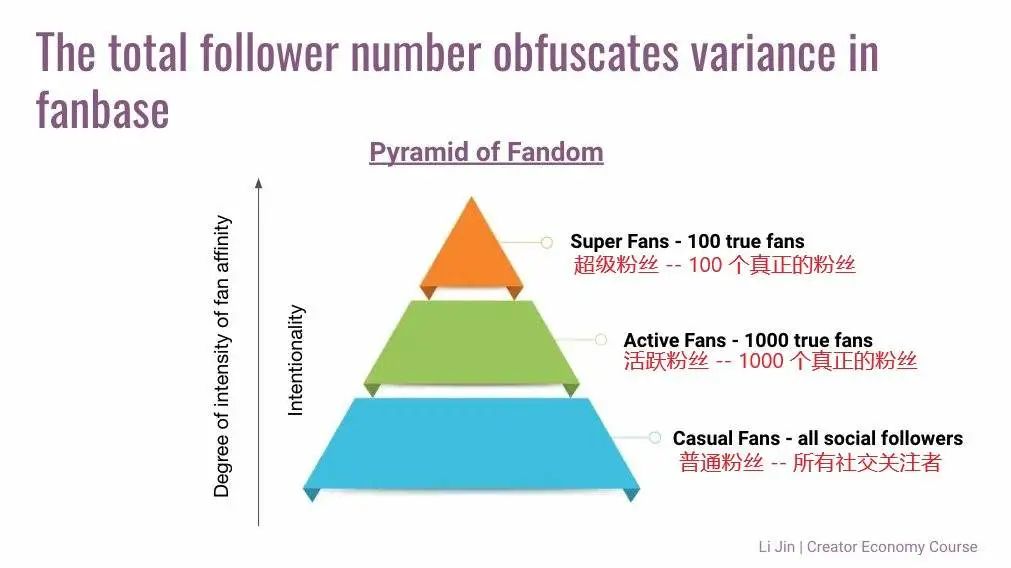
Above: Li Jin's fan pyramid shows the difference between a creator's 1,000 true fans and 100 true fans.
Again, numbers don't matter. The key here is that,Creators can make ends meet with a small number of loyal fans and a high willingness to pay.However, this is not an easy task -Creators need to provide more value to fans to justify higher prices. While this sounds too good to be true, it's already happening:
Li Jin: A creator on Teachable (an online course platform) who advises artists on selling art earned $110,000 last year from just 76 students, an average of $1,437 per class. Another creator who teaches physical therapy made $141,000 with just 61 students, with an average price per course of $2,314. (Source: 1000 True Fans? Try 100)
In conclusion, new digital platforms and tools have unlocked the Creator Economy 3.0, giving many creators the opportunity to earn a living from their passion and personality. we call thisPart 1 of Creator Economy 3.0。
The second part is that cryptocurrencies finally entered the game, opening up the possibility of a super creator economy.With Crypto (cryptocurrency), creators can gain new earning opportunities, more power and freedom.
One of the core benefits of Crypto is the introduction of digital scarcity through Tokens.Without Crypto, there is no concept of digital scarcity for digital content, resulting in anything that can be copied, meaning creators have limited ability to sell digital products. They have found ways to approach scarcity, such as by selling premium content (such as e-books or photo books). However, the underlying content is still easily copied and redistributed for free.
NFT (non-fungible token) allows us to represent digital assets online, so that we can have ownership of digital assets on the Internet. With NFT, we can verify ownership (who owns a certain digital asset?) and authenticity (does he own the real thing?). This is powerful because:
image description
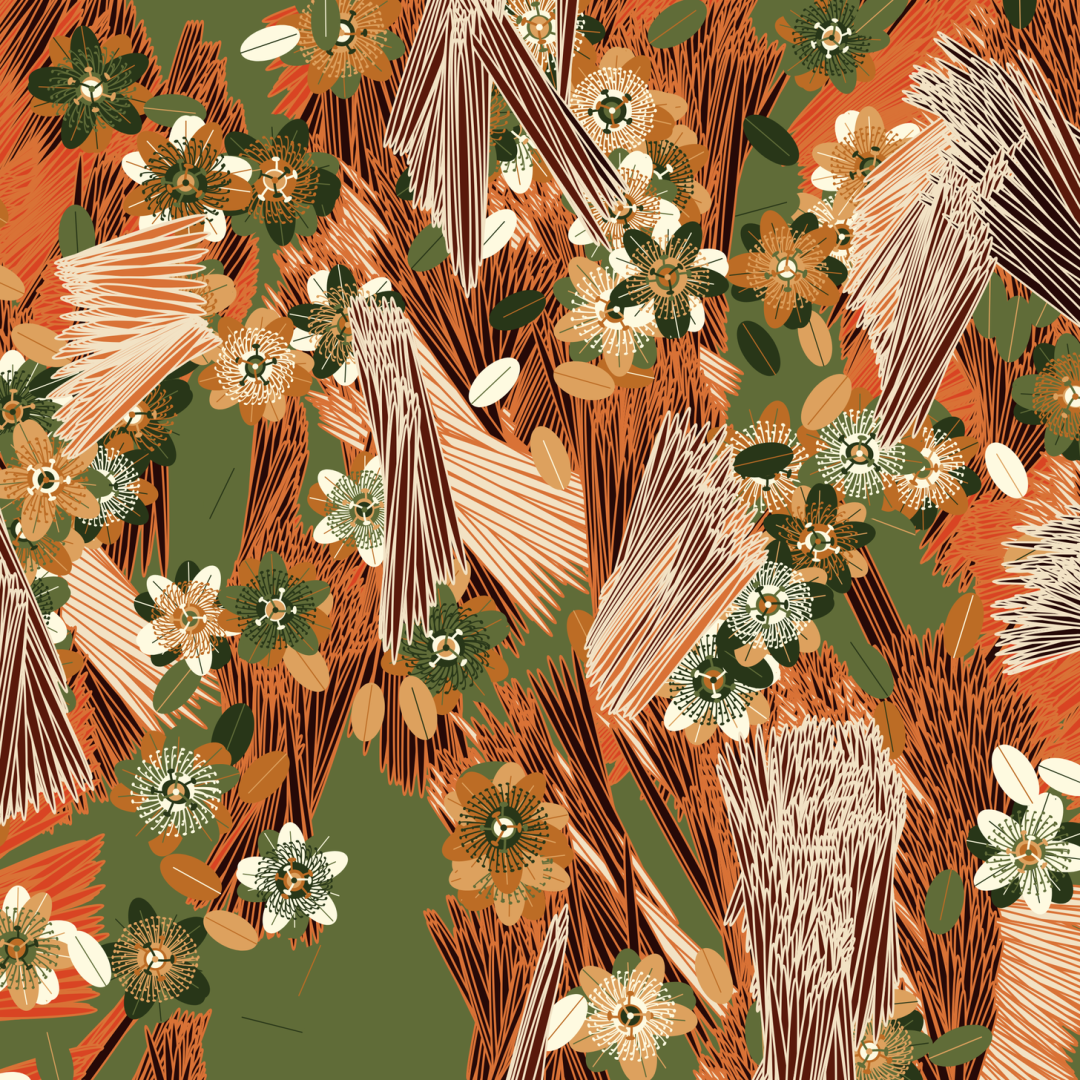
Above: Fragments of an Infinite Field #814
Creators can easily verify who owns their assets, which allows them to communicate deeper value to those owners.image description
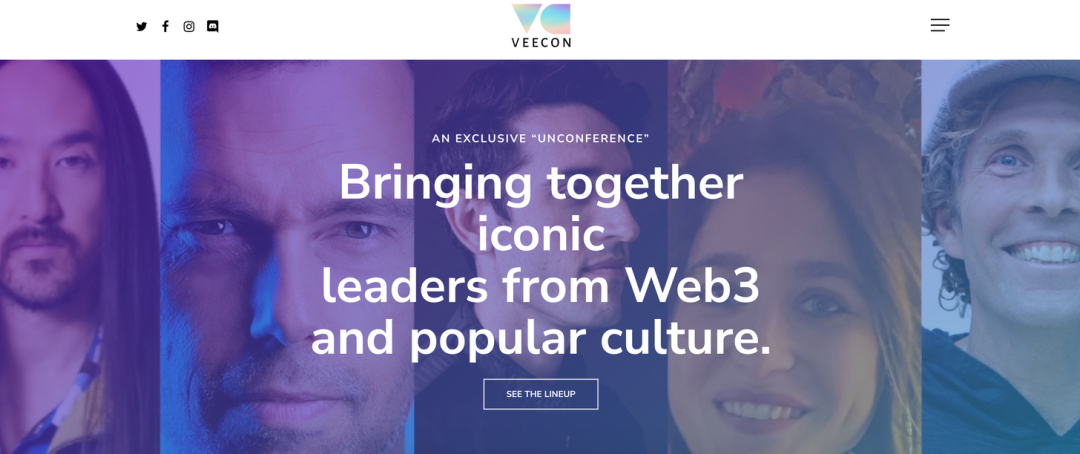
Above: VeeCon is described as “the first NFT-accepted conference for the Web3 community, bringing everyone together to form lasting friendships, share ideas, and learn together.”
The introduction of digital scarcity via NFTs has interesting implications for the "creator-fan relationship". Since NFT can be freely traded in the market,Fans are financially aligned with the creator and can profit from the creator's success. Jesse Walden calls it "patronage+", which means that fans support creators not only out of altruistic desires, but also out of their own financial interests. This brings many benefits:
There will be more people willing to support creators, including a new group of fans, profit-seekingspeculator;
Fans (including speculators) are incentivized to help creators succeed, for example by sharing the works of creators, because the success of creators is their profit;
Fans can publicly demonstrate their varying degrees of devotion to creators, whileCreators can capture fans' willingness to pay. For example, XCOPY, one of the most popular crypto artists, sells his artwork in NFTs for millions of dollars, but fans can also buy versions of his artwork for thousands of dollars (there is a fixed supply , e.g. 750 identical entries);
image description
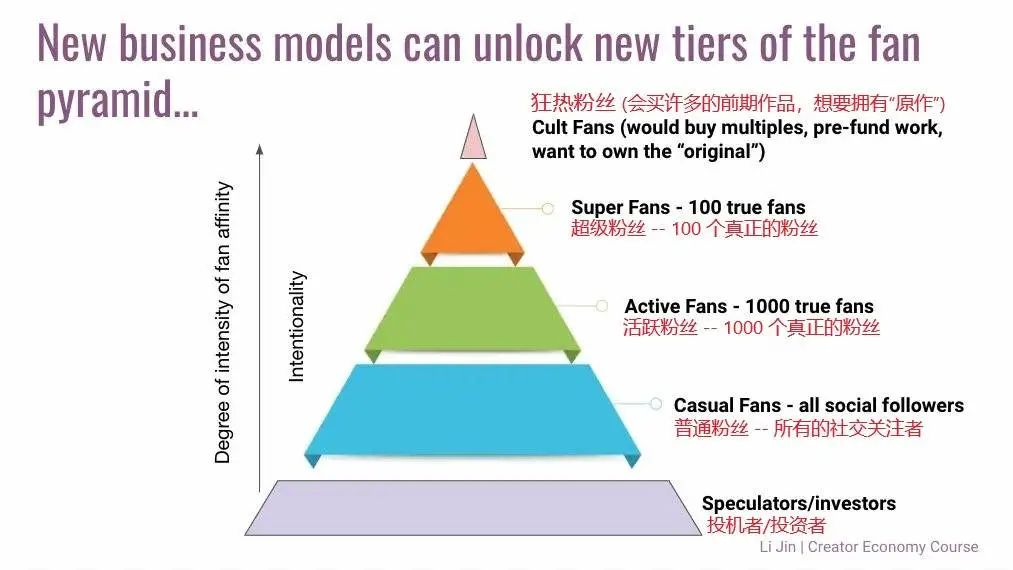
Above: This is an updated version of Li Jin's fan pyramid, including two new fan groups: speculators (bottom) and avid fans (top).
Another benefit of Crypto is the ability to fairly distribute value to those who created it.There are several angles on this:
Although content creation is often a collaborative process, tracking and rewarding collaborators is not easy.image description
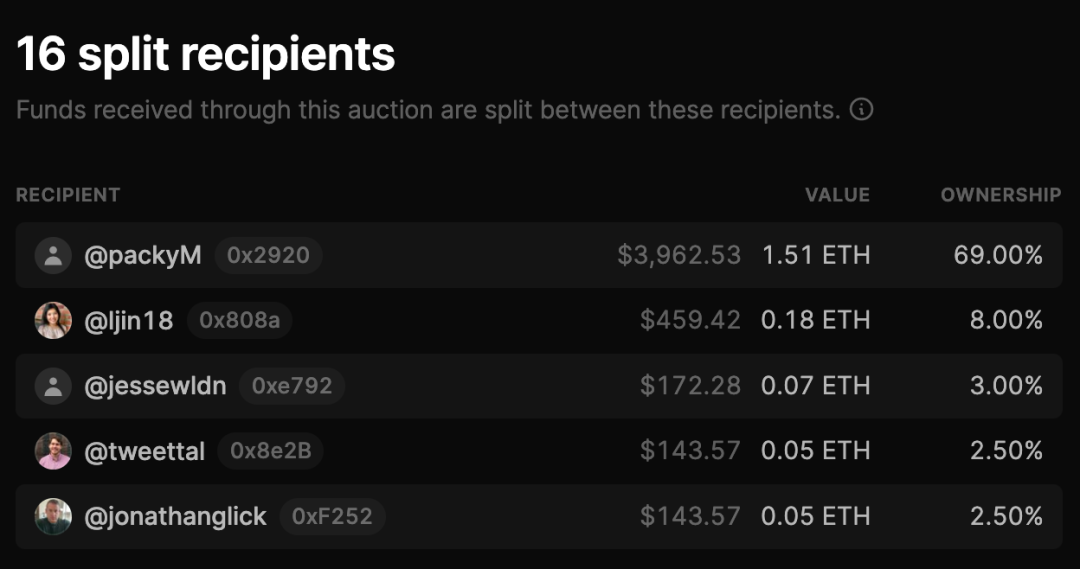
Packy McCormick’s NFT was sold for 2.19 ETH ($5742.79) and was shared with 15 other participants.
Li Jin points to a trend in developed countries where people earn more money from their capital (things that pay off) than from their labour. This exacerbates income inequality, as those who own capital get richer than those who work.
Li Jin: A world where what people have (capital) contributes more to their wealth than what they actually put in their energy and effort, it bodes very badly for our society and sets us on a path The path to more extreme income inequality, which increases over generations. What I'd like to see is that we bring them (i.e. labor and capital) together so that those who contribute labor can earn capital through their work so that the relationship becomes indistinguishable. (Source: How To Own The Internet | Bankless)
In a creator economy, we can think of creators as contributing labor that creates value for platforms and financially rewards the owners of those platforms.What if the creator could also be the owner of the platform? Ownership will provide another avenue for creators to achieve economic stability.But the problem is that, as Li Jin puts it, platform ownership is limited to “a privileged set of individuals—whether based on geography, network, expertise, access, or for regulatory reasons.”
Fortunately, Crypto breaks down these boundaries and makes it easy to distribute Tokens (tokens) that represent value and ownership.With Crypto, creators can take ownership of the products and services they use, simply by participating.image description
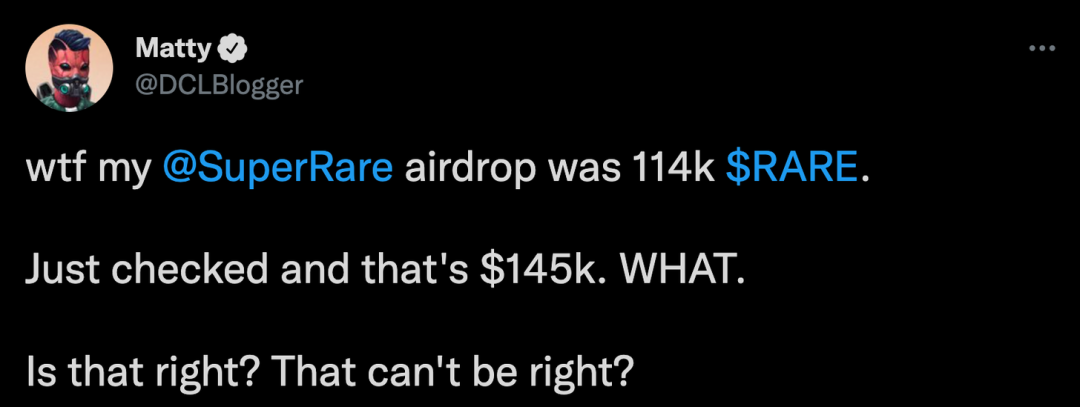
Above: An individual received over $100,000 worth of $RARE tokens from the SuperRare airdrop.
Jesse Walden articulates the value of cryptocurrencies in terms of open ownership:
Jesse Walden: The opportunity in Web3 is to build platforms and networks that are built, operated, and actually owned by users... Now we have the potential to deliver the value of ownership at the same speed and scale as information. We know from the history of Silicon Valley that ownership is a powerful motivator for talented people to contribute to a company, but it is impossible to distribute that ownership to everyone in the world... and cryptocurrencies make this possible because you can actually send Tokens, these Tokens are valuable to anyone with an internet connection, no matter where they are. (Source: What Is The Creator Economy? | Bankless)
So far we have focused on monetization options in Creator Economy 3.0, buttext。
exist
existCreator Economy 2.0 Stage, creators have little freedom to shift their content and audience without compromising their own livelihoods (since creators are often locked into specific platforms), and they have little power to oppose platform decisions.
However, withCreator Economy 3.0 StageallowNew digital platform for open datathe appearance ofThis power imbalance shifts slightly in favor of creators, for example Substack allows authors to export and take their subscriber list anywhere.Cryptoto reinforces this because the data is public and stored in public databases.This gives creators complete flexibility over how the data is used, and means creators are not locked into a specific platform.
And by making creators the owners of the platforms they use, it would bring about a greater shift in power.first level title
Creator Economy 4.0: The Future of the Creator Economy
Li Jin: Ultimately, the next phase of the creator economy will be breaking down the boundaries between who is a creator and who is an audience. The creator economy enters a world where audiences co-create with creators, who are all part of a community, driving value back into their collective output. In this world, everyone is rewarded proportional to the value they contribute. I call it the evolution of the creator economy to the community economy. This is a supercharged version of the creator economy. (Source: How To Own The Internet | Bankless)
Li Jin called it Creator Economy 4.0, or community economy. it's here,Creators will co-create with their fans and create wealth together.This is achieved by adjusting the incentive mechanism of authors and fans through encrypted Tokens.
The main difference between this stage and Creator Economy 3.0 is that,Fans can earn income and ownership for their contribution to the creator's success.The reason for this is that,We don't want to reproduce this power imbalance between traditional platforms and creators between creators and fans.
image description
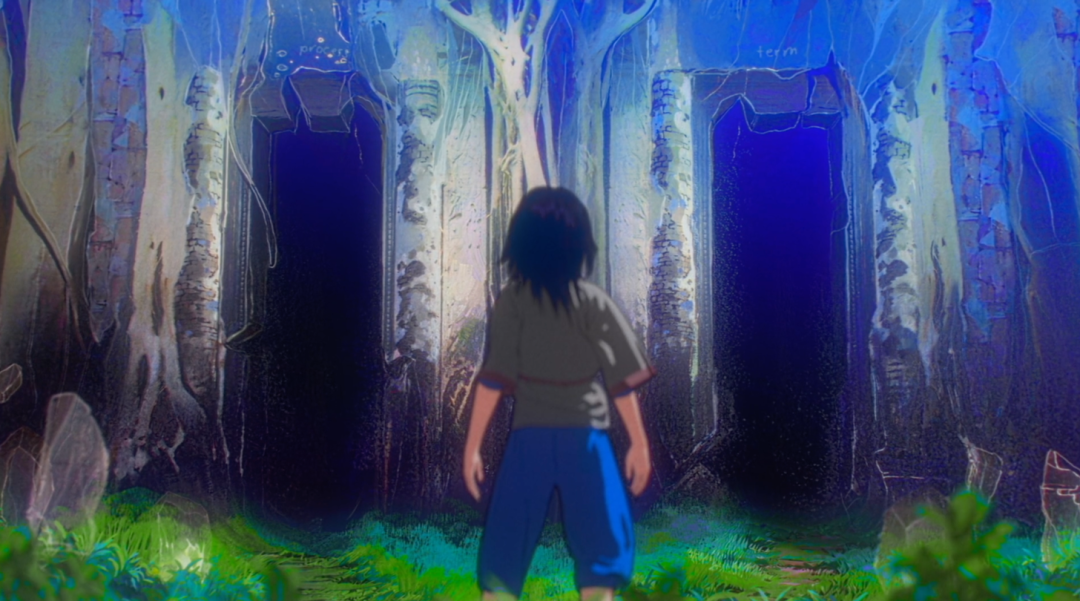
Above: Screenshot from the trailer for the first episode of the Shibuya platform’s “White Rabbit” anime series. Source: https://www.shibuya.xyz/player
Another example is the NFT project created by sartoshimfers, which is a set of generative hand-drawn character NFT collectibles. These are all released under the CC0 license, which means there is no copyright on this NFT collection. Anyone can do whatever they want with it. They can create and sell derivative artwork, create merchandise, write books or create animations. Those who own mfers NFTs have an incentive to increase the profile and appeal of this collection of NFT collectibles, as this will increase the value of their merfs holdings. However, nothing prevents those without mfers from also co-authoring with the mfers community and getting rewarded.
image description

Above: mfers NFT
So far, we've only had a small glimpse of what a creator economy 4.0 might look like. It will be interesting to see what happens next and how we can get rewarded for contributing online.
Li Jin: Everyone who uses the Internet is a creator in their own unique way, and what will change in the future is that they can benefit economically from it. (Source: How To Own The Internet | Bankless)
Ultimately, the development of each new phase of the creator economy helps solve problems of the past, and each phase gives creators new options. The "happy ending" to the creator economy will be a world in which what Li Jin calls the enthusiasm economy exists at scale. Crypto is the latest tool in the toolbox that promises to help us make this happen.
When the creator economy was born, anyone had the opportunity to be a creator, but there was no way to make money. Now with Crypto, Li Jin is optimistic that we can build a world where "everyone gets some income and ownership from their contribution to the Internet, so everyone becomes a part creator". That's a world that excites me.